Religion: Religious Leaders Pre-1900
Juan de Zumárraga (1468-1548)
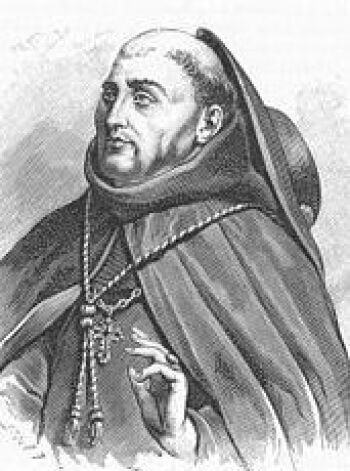
Religion and Branch: Christianity (Catholicism)
Title: Archbishop of Mexico
Juan de Zumárraga holds a significant position in the religious history of Mexico, especially during the early period of Spanish colonization. In 1528, he was appointed as the first bishop of Mexico, and later in 1547, he became its first archbishop. His role was not just ecclesiastical; he was also a protector of the indigenous people and played a role in the establishment of the colonial government.
Zumárraga was a staunch advocate for the rights of the indigenous people. He vehemently opposed their mistreatment and exploitation by the Spanish colonizers and took steps to protect their rights. He was keen on evangelizing the native population, setting up schools, and initiating a massive campaign of religious conversion. This campaign sometimes led to the destruction of indigenous books and religious icons, which he saw as pagan.
Zumárraga was the first inquisitor of New Spain, and he held the first auto-da-fé (a public penance ceremony) in the Americas. Though the Inquisition in New Spain was not as brutal as it was in other regions, it still played a role in suppressing heretical views and practices.
Recognizing the importance of education in evangelization and governance, Zumárraga founded the first higher-education institution in the Americas, the College of Santa Cruz in Tlatelolco, in 1536. This institution aimed at educating indigenous nobility in Christian doctrine, Latin, music, arts, and other subjects.
Zumárraga was involved in the early investigations of the reported apparition of Our Lady of Guadalupe to the indigenous Juan Diego in 1531. The veneration of Our Lady of Guadalupe played a pivotal role in the Christianization of Mexico and remains a central figure in Mexican Catholicism.
Archbishop Zumárraga played an integral role in shaping the religious landscape of early colonial Mexico, with a legacy that has left both positive and controversial marks on the history of the country.
Juan Diego Cuauhtlatoatzin (1474-1548)
Religion and Branch: Christianity (Catholicism)
Title: Visionary of Virgin Mary
Juan Diego Cuauhtlatoatzin, also known simply as Juan Diego, holds a significant place in Mexican religious history due to his role in the apparition of the Virgin Mary as Our Lady of Guadalupe.
According to tradition, between December 9 and December 12, 1531, Diego experienced several apparitions of the Virgin Mary at the Hill of Tepeyac near present-day Mexico City. She revealed herself as the Virgin of Guadalupe and instructed him to have a church built on that location.
The most significant apparition occurred on December 12 when Juan Diego showed the image of the Virgin imprinted miraculously on his tilma (a type of cloak) to the archbishop as a sign. This image became the famed icon of Our Lady of Guadalupe, which remains on display in the Basilica of Our Lady of Guadalupe in Mexico City and is one of the most revered religious icons in the Americas.
Diego was one of the early indigenous converts to Roman Catholicism after the Spanish conquest. His experiences served as a powerful symbol of the blending of indigenous and Spanish Catholic beliefs. The Virgin of Guadalupe, with her dark skin and features that resonate with indigenous people, represented a compassionate figure that transcended both cultures.
Diego was canonized as a saint by Pope John Paul II on July 31, 2002. His canonization reaffirmed the significance of the indigenous people in Mexico's Catholic faith and history.
Diego's experiences deeply rooted the devotion to Our Lady of Guadalupe in the heart of Mexican culture. To this day, millions of pilgrims visit the Basilica in Mexico City annually, especially around the feast day of Our Lady of Guadalupe on December 12. He remains an enduring symbol of faith, humility, and the melding of indigenous and European traditions in Mexico.
Toribio of Benavente (1482-1565)
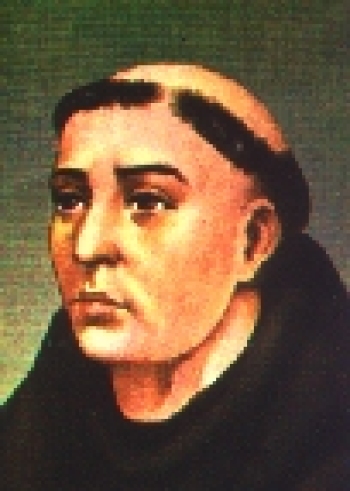
Religion and Branch: Christianity (Catholicism)
Title: Franciscan Missionary, Writer
Toribio of Benavente, commonly known as Motolinía (which means "poor" or "humble" in the Nahuatl language), was a Spanish Franciscan missionary who played a crucial role in the early Christianization of Mexico after the Spanish Conquest. He was one of the first 12 Franciscan missionaries, often referred to as the Twelve Apostles of Mexico, who arrived in the New World in 1524 to undertake the evangelization of the indigenous people.
Motolinía was known for his sympathies toward the native peoples of Mexico, which earned him his Nahuatl name. He often criticized the harsh treatment of the indigenous by the Spanish encomenderos (colonial landlords).
Motolinía was an important chronicler. He wrote extensively about the customs, traditions, and history of the indigenous people. His works are considered vital primary sources for understanding pre-Columbian and early colonial Mesoamerican cultures.
While Motolinía defended the indigenous people against abuses by Spanish settlers, he clashed with Bartolomé de las Casas, another clergyman who was a more radical advocate for native rights. Las Casas criticized the Franciscans, including Motolinía, for not doing enough to protect the indigenous populations.
Unlike some of his contemporaries, Motolinía believed in gentle methods of conversion, using persuasion rather than force. He and his fellow Franciscans established schools, monasteries, and hospitals, aiming to integrate the indigenous peoples into the Christian fold peacefully.
Motolinía was instrumental in the early Christianization of Mexico. He left behind an invaluable account of indigenous life and traditions during a period of monumental change.
Bartolomé de Las Casas (1484-1566)
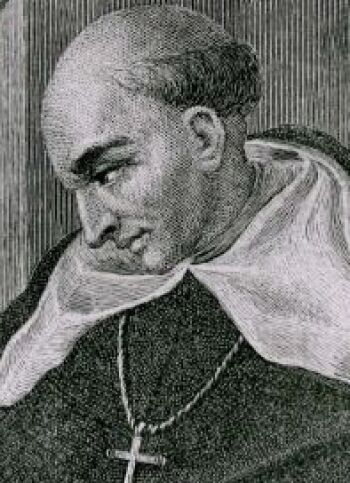
Religion and Branch: Christianity (Catholicism)
Title: Dominican Friar, Missionary, Historian, Bishop of Chiapas
Bartolomé de Las Casas was a 16th-century Spanish Dominican friar, missionary, and historian who is best remembered for his fervent advocacy for the rights of the indigenous peoples of the Americas. He initially benefited from the encomienda system, which granted Spanish settlers the labor and tribute of specific indigenous communities.
However, after witnessing the brutality and injustices that the native populations suffered under Spanish rule, Casas underwent a profound transformation. In a dramatic act of conscience, he renounced his own encomienda and began advocating for the rights of the indigenous people.
Casas became one of the first advocates for universal human rights, particularly for the indigenous populations of the New World. He protested against the Spanish colonization methods and the mistreatment of the native inhabitants.
One of his most famous works, A Short Account of the Destruction of the Indies, detailed the atrocities committed by the Spanish colonizers against the indigenous people. His accounts, while accurate, were often written in a polemic and accusatory style.
Casas suggested alternative methods for colonization that wouldn't involve harm to the native populations. While some of his suggestions, such as importing African slaves, were misguided and had tragic consequences, his intentions were to alleviate the suffering of the indigenous people.
As the bishop of Chiapas, Mexico, Casas implemented and enforced protective policies for the indigenous peoples, furthering his advocacy through ecclesiastical channels.
Casas' passionate defense of the indigenous people made him a controversial figure in his time, but today he is recognized as a visionary advocate for human rights. His writings influenced international law and contributed to the development of the concept of universal human rights. He was a pivotal figure in the early history of Spanish colonial America, known for his tireless defense of indigenous rights and his critiques of Spanish colonization methods.
Hernán Cortés (1485-1547)
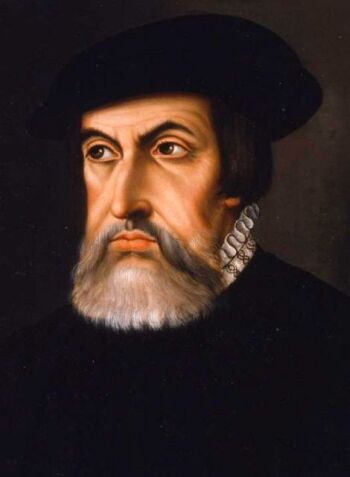
Religion and Branch: Christianity (Catholicism)
Title: Conquistador, Governor of New Spain
Hernán Cortés was a Spanish conquistador responsible for the downfall of the Aztec Empire and the subsequent colonization of large parts of Mexico for Spain. His interactions with religion in Mexico were significant and multifaceted.
Like many Spanish explorers of his time, Cortés was influenced by a strong Catholic ethos. The Spanish Crown, in addition to seeking riches in the New World, was motivated by the desire to spread Christianity. Cortés and his men saw themselves as crusaders spreading the one true faith to the "heathens" of the New World.
Cortés viewed the religious practices of the Aztecs, especially human sacrifice, with horror. These differences in religious beliefs and practices contributed to the conflict between the Spanish and the Aztecs. After conquering Tenochtitlán, the capital of the Aztec Empire, Cortés and his men systematically destroyed many of the city's religious sites and idols.
On the ruins of the destroyed Aztec temples, Cortés and the Spanish began constructing Christian churches. The most symbolic of these acts was the construction of the Metropolitan Cathedral of the Assumption of the Most Blessed Virgin Mary into Heaven in Mexico City, which stands on the site of a former Aztec sacred precinct.
Cortés was deeply involved in efforts to convert the indigenous peoples of Mexico to Christianity. With the help of Catholic missionaries, many indigenous people were baptized into the Catholic faith, although the conversion process was often fraught with tension, resistance, and was sometimes forced.
While Cortés sought to eradicate Aztec religious practices, he also had a pragmatic side. He occasionally made alliances with other indigenous groups opposed to the Aztecs and was willing to be somewhat accommodating of their religious practices if it suited his political and military goals.
Cortés played a pivotal role in the transformation of Mexico's religious landscape. Under his leadership, the dominant religious structures and practices of the Aztecs were dismantled, and in their place, Catholicism was established as the primary religion, a legacy that continues to shape Mexico to this day.
Antonio de Mendoza (1495-1552)
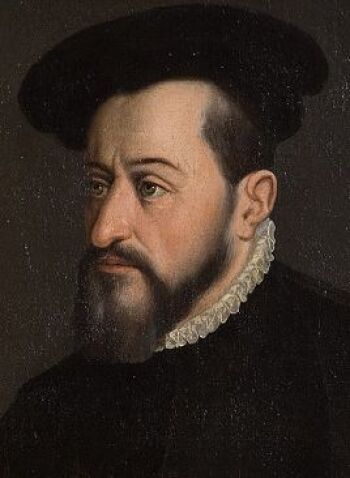
Religion and Branch: Christianity (Catholicism)
Title: Viceroy of New Spain
Antonio de Mendoza was a Spanish colonial administrator who served as the first viceroy of New Spain (modern-day Mexico) from 1535 to 1550 and the second viceroy of Peru from 1551 to 1552.
As viceroy, Mendoza took a keen interest in the Christian missionary efforts in New Spain. He supported the establishment of missions and the evangelization of the indigenous populations. He saw conversion to Christianity as a means of pacifying the native people and solidifying Spanish rule.
Mendoza believe in the fair treatment of the indigenous peoples. He sought to protect them from the worst abuses of the encomienda system and other forms of Spanish exploitation.
Mendoza was instrumental in the founding of the Colegio de Santa Cruz in Tlatelolco in 1536, which was the first institution of higher learning in the Americas. Here, Franciscan friars taught indigenous nobles in Christian doctrine, Latin, music, and other subjects. The goal was both religious and political: to create a local Christian clergy and an educated indigenous elite who could help administer the colony.
Named after him, the Codex Mendoza is an invaluable colonial-era document that details the life of the Aztecs, both before and after the conquest. Commissioned by Mendoza, it was intended to provide him with detailed information about the governance and tribute system of the Aztecs, but it also provides a lot of insight into religious practices. The codex is an example of Mendoza's interest in understanding and governing the indigenous people.
While Mendoza's primary role in New Spain was administrative and political, he played a significant role in the religious transformation of the region by supporting missionary activities and educational endeavors. He also took measures to protect the indigenous people from extreme exploitation and sought to understand their culture and history.
Diego de Landa (1524-1579)

Religion and Branch: Christianity (Catholicism)
Title: Friar, Writer, Bishop of Yucatán
Diego de Landa was a Spanish Franciscan friar and bishop who played a central role in the Roman Catholic Church's efforts to convert the indigenous Maya people in the Yucatán Peninsula of Mexico. Becoming a Franciscan friar in 1541, he arrived in the Yucatán eight years later in 1549, just a few years after the Spanish conquest of the region. As a zealous missionary, he quickly set about the task of converting the native Maya to Christianity.
Landa was particularly intolerant of the native Mayan religion and customs. This intolerance culminated in an event known as the auto-da-fé (meaning "act of faith") of Maní in 1562. He ordered a massive inquisition where numerous Maya codices (books), religious icons, and statues were gathered and burned, an act which led to the loss of a vast amount of knowledge about Maya civilization and its history.
Paradoxically, while he suppressed Maya religious practices, Landa also acted as a defender of the Maya against the often brutal treatment by Spanish colonists. He documented these abuses and sent reports to the Spanish Crown.
Despite his destruction of Mayan religious texts, Landa's work List of Things in Yucatán became an invaluable resource for understanding the Maya. In it, he detailed many aspects of Maya culture, society, and religious practices. Most importantly, the work included a description of the Maya script, which became a foundational resource for later scholars attempting to decipher Maya hieroglyphs.
Landa returned to Spain in 1565 and was appointed as the second bishop of Yucatán in 1572. He returned to the Yucatán and continued his ecclesiastical duties until his death in 1579.
Landa remains a controversial figure in the history of the Americas. On one hand, he is criticized for his harsh suppression of Maya religion and the irreparable cultural loss caused by the burning of the codices. On the other hand, his writings provided key insights into the Maya world, offering a detailed account of their customs, beliefs, and language.
Landa's actions and legacy encapsulate the complex and often conflicting dynamics of the early colonial period in the New World, where the drive to convert indigenous populations often went hand-in-hand with a genuine interest in understanding and documenting their cultures.
José de Acosta (1539/1540-1600)
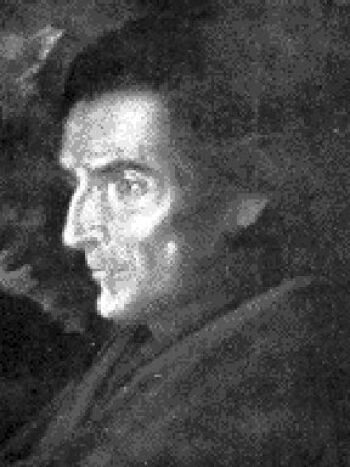
Religion and Branch: Christianity (Catholicism)
Title: Jesuit Missionary
José de Acosta was a Spanish Jesuit missionary and naturalist who played a significant role in the early Jesuit missions in the New World, particularly in Latin America.
Acosta traveled to the Americas in 1571, where he spent a considerable amount of time in Peru and Mexico. He was deeply involved in missionary efforts to convert indigenous populations to Christianity and was instrumental in establishing the Jesuit presence in the region.
Acosta made significant efforts to understand indigenous cultures, which he believed was essential for effective evangelization. He emphasized the importance of adapting Christian teachings to local customs and languages.
Acosta's most famous work is Natural and Moral History of the Indies published in 1590. In this text, he provides detailed observations of the indigenous cultures, flora, fauna, and geography of the regions he visited. Moreover, he also addressed theological and philosophical questions about the native peoples' place in the Christian worldview, particularly regarding their capability and preparedness to receive the Christian message.
Unlike some of his contemporaries, Acosta believed that the indigenous peoples of the Americas were fully rational beings. He refuted the notion that they were inferior or incapable of understanding and accepting Christianity.
After returning to Spain in 1587, Acosta continued his academic and religious pursuits. He was appointed as a provincial for the Jesuit order in his later years.
Acosta was not only a dedicated missionary but also an early anthropologist and ethnographer who advocated for a nuanced and respectful approach to the evangelization of indigenous populations in the New World.
Juana Inés de la Cruz (1648-1695)
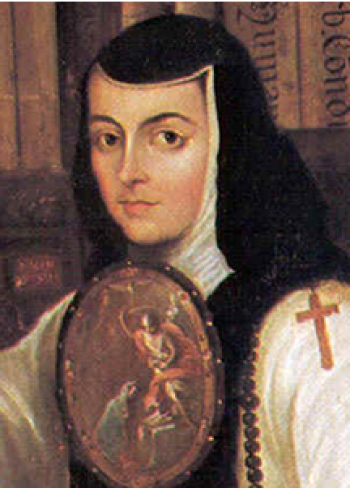
Religion and Branch: Christianity (Catholicism)
Title: Nun, Writer, Philosopher
Juana Inés de la Cruz is a celebrated figure in the history of Mexico, known for her literary achievements, intellectual prowess, and her relationship with religion. She chose to become a nun, entering the convent of the Order of Saint Jerome in Mexico City.
The convent provided Cruz with the opportunity to continue her studies and intellectual pursuits without the societal pressures of marriage. Within the convent's walls, she amassed an extensive library and became one of New Spain's most prominent scholars.
Cruz's writings covered a wide range of topics, from love to religion. She is best known for her poetry, but she also wrote plays and prose. Her works are often infused with theological ideas and references.
One of Cruz's most famous works, Response to Sister Philotea, is a letter in which she defends women's rights to education and intellectual life. While it's framed within the context of religious discourse, it's seen today as one of the earliest declarations of women's intellectual rights in the Americas.
Cruz's intellectual pursuits and outspoken nature occasionally drew criticism from male church authorities. They believed her focus on secular topics was inappropriate for a nun. This criticism culminated in the aforementioned Response to Sister Philotea, which was a defense against the Archbishop of Mexico's critique of her writings and her encouragement to focus on religious rather than secular studies.
In the latter part of her life, facing increasing pressure from church authorities, Cruz sold her library and devoted herself more strictly to religious duties. Her later poems reflect a more penitent and introspective tone.
Cruz is remembered not just as a religious figure in Mexico, but also as a pioneering feminist, a brilliant scholar, and one of the most significant poets of the Spanish Golden Age. Her life and work shed light on the complexities of intellectual and religious life in colonial Mexico.
Juan María de Salvatierra (1648-1717)
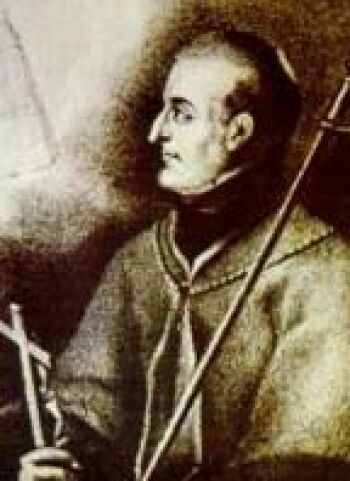
Religion and Branch: Christianity (Catholicism)
Title: Missionary, Priest
Juan María de Salvatierra was a Jesuit missionary who played a pivotal role in the Christian evangelization of the Baja California peninsula in present-day Mexico. Born in Milan, Italy, he joined the Society of Jesus (the Jesuits) at a young age. He was drawn to missionary work and eventually made his way to the Americas.
Salvatierra is best known for establishing the first permanent Jesuit mission in Baja California, Mission Our Lady of Loreto, in 1697. It would become the foundational establishment from which Jesuits would launch a series of missions throughout the peninsula.
The terrain and climate of Baja California were harsh, and the indigenous peoples had a complex relationship with the incoming Spanish. Salvatierra, however, was committed to his evangelical task and sought to better the living conditions of the indigenous communities, teaching them agriculture and crafts, all while promoting Christianity.
Salvatierra often collaborated with other Jesuit missionaries, such as Eusebio Francisco Kino, in his endeavors. Their combined efforts were instrumental in mapping parts of northwestern Mexico and parts of the present-day southwestern United States.
The mission system that Salvatierra helped establish in Baja California was the beginning of a network that would eventually spread throughout the Californias. His dedication and the work of those who followed laid the foundation for the eventual spread of Christianity throughout the region.
Salvatierra continued his missionary work until his health began to decline. He passed away in 1717 in Guadalajara, Mexico.
Salvatierra's efforts, like those of many missionaries of the time, were a mix of genuine religious fervor and the colonial ambition of the Spanish Empire. While he is remembered for his dedication to evangelizing the indigenous peoples and his efforts to improve their living conditions, the broader impact of the mission system on native cultures and populations is a complex and often contentious topic in the history of the Americas.
Juan Ramos de Lora (1722-1790)
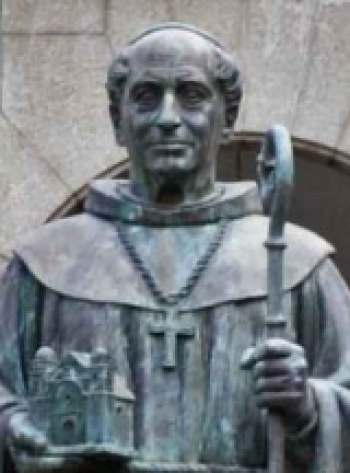
Religion and Branch: Christianity (Catholicism)
Title: Priest, Missionary, Bishop of Mérida and Maracaibo
Juan Ramos de Lora was an influential figure in the Catholic Church in colonial South America during the late 18th century. Born in Spain, he was ordained as a priest of the Franciscan order in 1746 and became a missionary. His dedication to the church and his skills led him to hold important positions within the order.
Ramos traveled to the Americas as part of the Franciscan missionary efforts. He worked primarily in the regions that are now Mexico and Venezuela. He served in Mexico's Sierra Gorda region for 16 years before serving in Baja California from 1767 to 1772.
In 1780, Ramos was appointed as the bishop of a new bishopric made up of Mérida and Maracaibo, located in present-day Venezuela. His leadership there was marked by efforts to strengthen the pastoral and administrative structures of the church in the region.
One of Ramos' most lasting contributions was the foundation of the University of the Andes in 1785 in Mérida, Venezuela. This institution was created to train clergy and provide higher education in the region. It is one of the oldest universities in Venezuela and has grown into a major institution of higher learning in the country.
Ramos' impact on religion in colonial South America was significant, especially in the areas of pastoral care, church administration, and education. His legacy in the church and in education continues to be felt in Venezuela and the broader region. The University of the Andes remains a testament to his vision and commitment to the church and education.
Miguel Hidalgo y Costilla (1753-1811)

Religion and Branch: Christianity (Catholicism)
Title: Priest, Leader of Mexican War of Independence
Miguel Hidalgo y Costilla, often simply referred to as Miguel Hidalgo, was a Roman Catholic priest and revolutionary leader who is credited with initiating the Mexican War of Independence. Ordained as a Roman Catholic priest in 1778, he served in various parishes in Mexico where he was known for his progressive and liberal views, which sometimes brought him into conflict with the conservative church hierarchy.
As a priest in Dolores (now Dolores Hidalgo, Guanajuato), Hidalgo championed the cause of the poor and indigenous people. He introduced crafts and industries to improve their economic conditions and attempted to reduce the racial and class divides.
On September 16, 1810, Hidalgo issued the Cry of Dolores, calling for the end of Spanish rule, the end of the special privileges of the peninsulares and criollos, and the end of the tributes and other abuses against the indigenous and mestizo populations. Importantly, he also called for the return to the indigenous peoples of lands that had been taken from them. This event marked the beginning of the Mexican War of Independence.
During the revolutionary movement, Hidalgo advocated for the removal of Spanish icons and symbols in churches. Under his leadership, some churches were looted, and religious images were destroyed, actions which caused a rift between him and the conservative religious establishment.
Due to his involvement in the uprising against Spanish rule and his radical actions, Hidalgo was excommunicated by the Roman Catholic Church. The excommunication didn't deter him from leading the movement but did alienate some conservative sections of society.
Hidalgo is remembered as the "Father of the Nation" in Mexico. While he was ultimately captured and executed in 1811, his efforts laid the foundation for Mexican independence. Every year, on September 15 at midnight, the president of Mexico reenacts the Cry of Dolores from the balcony of the National Palace in Mexico City, commemorating the beginning of the War of Independence.
Hidalgo's relationship with religion in Mexico is multifaceted. While he was a Roman Catholic priest and championed the rights of the poor and indigenous, his revolutionary activities and some of his religious actions created tensions with the conservative church establishment.
Copyright © 1993—2024 World Trade Press. All rights reserved.

 Mexico
Mexico